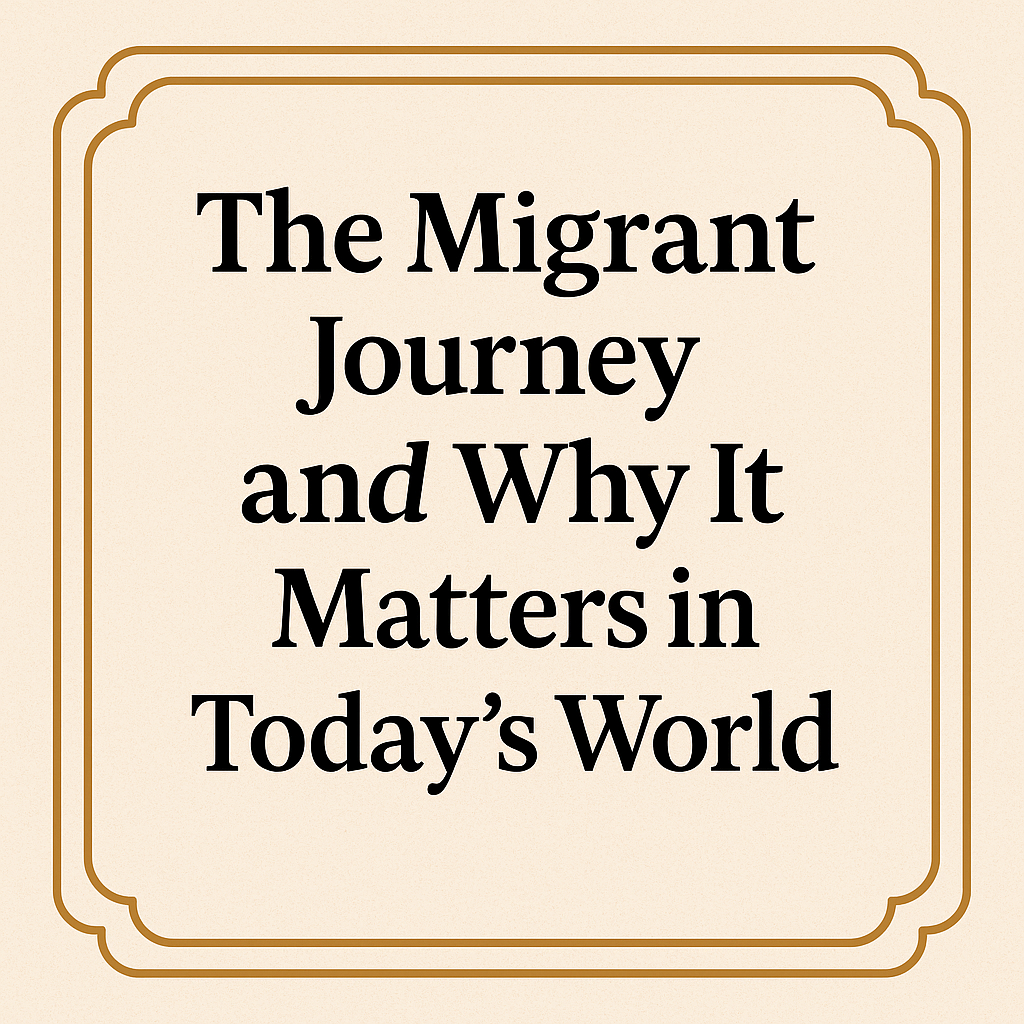Who Are Migrants Today?
Migrants today are not a single group. They include refugees fleeing conflict, workers searching for jobs, families escaping poverty, and young people chasing education. Some move voluntarily. Many have no choice.
As of 2024, over 281 million people live outside their country of birth — that’s 3.6% of the world population. These are not just statistics. They are teachers, farmers, parents, and children. They carry dreams and fears, just like anyone else.
Why People Leave Their Homes
No one leaves home unless home becomes dangerous, unstable, or impossible to survive in. War, political persecution, religious violence, and extreme poverty are among the top reasons why people are forced to migrate.
In recent years, environmental disasters caused by climate change have also pushed millions from their homes. Floods, droughts, and food shortages are making entire communities unlivable, especially in places like Sub-Saharan Africa and South Asia.
Crossing Borders for Survival
The routes migrants take are often dangerous. In Africa, many cross deserts with little water or shelter. In the Middle East, families travel at night to avoid detection. In Latin America, migrants face gangs and unsafe transport. Thousands attempt to cross the Mediterranean Sea every year — and many don’t make it.
Border patrols, harsh policies, and lack of safe migration channels force people to turn to smugglers or unsafe boats. According to the UN, more than 72,000 migrants have died or gone missing since 2014 trying to reach safety.
Europe and the Migration Debate
Europe remains one of the most sought-after destinations for migrants, especially those from Africa, the Middle East, and South Asia. But many European countries are tightening their borders. Greece, Italy, Spain, and Cyprus are frontline states, where thousands arrive each year by sea.
Tensions are rising between countries demanding stronger border protection and those calling for a fair and humane migration system. Turkish President Erdoğan recently accused European authorities of sabotaging migrant boats — a reminder of how heated and dangerous this issue has become.
How Host Countries Benefit
Despite the controversy, many countries depend on migrants. In Australia, for instance, India is set to overtake the UK as the top source of new migrants. Migrants fill labor gaps, bring cultural diversity, and help aging populations stay economically active.
Studies show that migrants contribute more in taxes than they receive in benefits. In countries like Canada, Germany, and the US, migrants have built businesses, supported healthcare systems, and added to the cultural fabric of their new homes.
Challenges Migrants Face After Arrival
Arriving in a new country doesn’t mean the struggle is over. Many face discrimination, legal uncertainty, language barriers, and isolation. Some live in camps for years, waiting for asylum claims to be processed.
Even skilled migrants often take jobs below their qualifications due to licensing or recognition issues. Without proper support, they are at risk of exploitation, poverty, and mental health challenges.
What Needs to Change
Migration is not going away. In fact, it’s expected to increase due to climate change, conflict, and global inequality. That’s why governments and societies need to prepare with clear, fair, and humane policies.
This includes:
- Creating safe and legal pathways for migration
- Supporting integration and language services
- Protecting children and vulnerable migrants
- Fighting racism and xenophobia in host communities
International cooperation is also vital. Migration is a global issue, and solutions must come from shared responsibility — not blame games.
Final Thoughts
Migration is part of our shared human history. It’s shaped nations and connected cultures. But today’s migrants are often treated as problems instead of people.
Behind every border crossing is a story of survival. Behind every face is someone searching for safety, dignity, and a chance at a better life. The way we treat migrants says more about us than about them. It’s time to shift the conversation — from fear to understanding, from walls to bridges.

